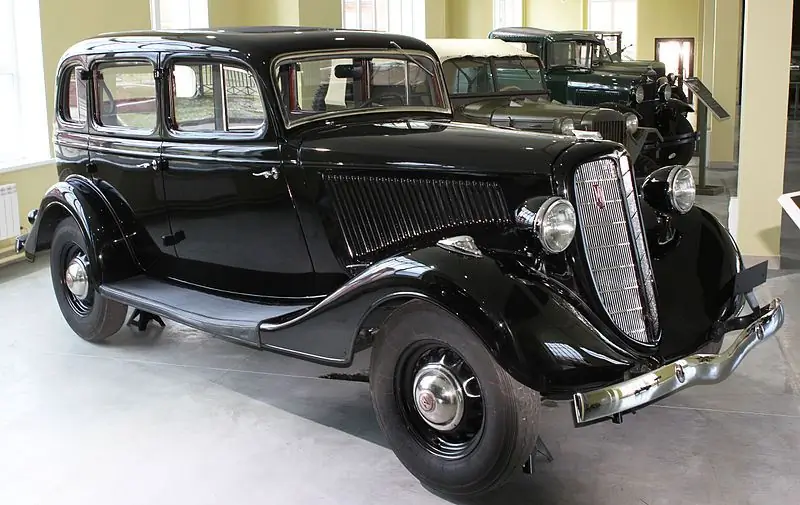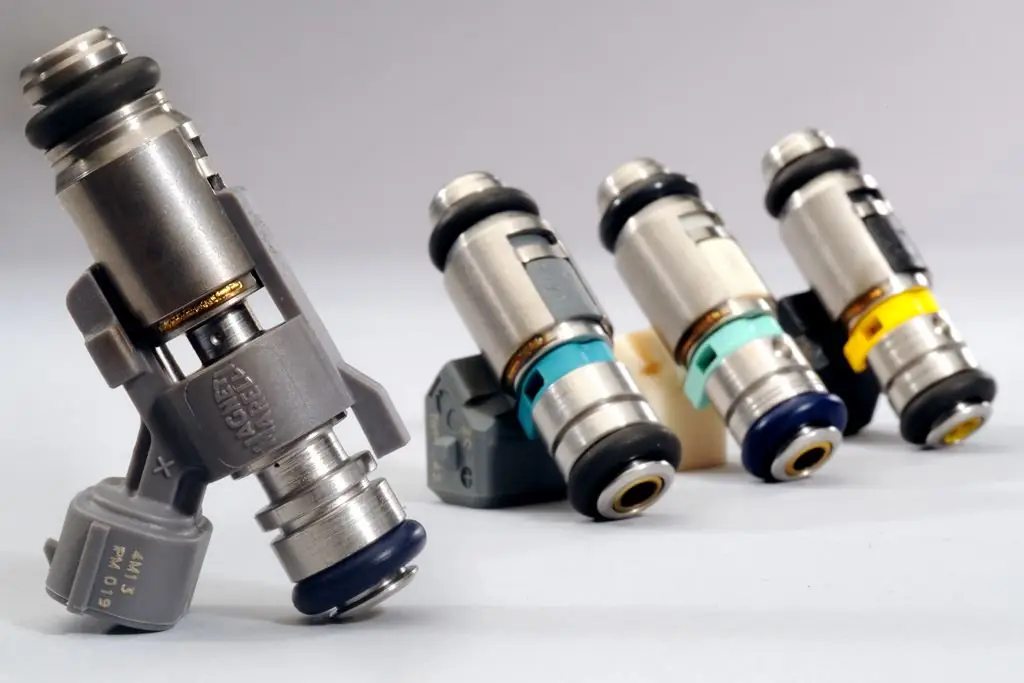2025 Author: Erin Ralphs | [email protected]. Last modified: 2025-06-01 05:35:55
The Japanese-made bike called the Yamaha XJR 400 is a classic street racer, has some similarities with the Honda SV-400. Judging by the reviews and reviews of the owners, there really are no special differences between them. A distinctive feature of the motorcycle in question is a round headlight, a power unit with four in-line cylinders, air-oil cooling, a pair of rear shock absorbers and chrome-plated instrument sockets.
Features
Yamaha XJR 400 was released between 1993 and 2009, initially the motorcycle was aimed at the Japanese market. In domestic open spaces, the car did not receive much distribution, although it did not cause any particular complaints. There are some shortcomings. However, there are plenty of pluses.
The powertrain layout features an air-cooled system that greatly simplifies the design, reducing maintenance costs and improving overall reliability. Among the disadvantages are noise during engine operation and increased temperature conditions. The seat is moderately wide and not hard, providing sufficient comfort when driving. Direct landing along with a high steering wheel creates good conditions for the driver. Excellent visibility is provided by mirrors,which are practically not subject to vibrational distortion.

Brake assembly
The Yamaha XJR 400 motorcycle has a braking system with a pair of front discs that proved to be excellent in action. In addition, this unit is equipped with reinforced hoses, making the brakes even more powerful and safer.
At the first modification of this bike, a standard, unremarkable version was installed. The next generation received Brembo calipers, and further modifications received a version from the sports Yamaha YZF-R1.
Pendant
This block can hardly be called ideal. Especially when you consider that it is not intended for domestic "highways". Therefore, drive on the technique should be more careful. The assembly is made in a budget version and is a standard telescopic front fork and two rear shock absorbers.
Although the fork has no adjustments, it behaves quite decently (just in case, it is better to use thick oil). With extreme driving style, the part works on the verge of breakdown, not to mention driving with a passenger. In addition, the suspension behavior is not very good cornering.

Powertrain
The pride of the Yamaha XJR 400 is the engine. This is a four-cylinder in-line engine. Its volume is 399 "cubes", power - 53 horsepower. Other Options:
- Cooling - air-oil type.
- Torque - 34 Nm.
- Compression - 10, 5.
If necessary, the unit can run on low-quality AI-92 gasoline. However, you should absolutely not get carried away with this.
Yamaha XJR 400 specifications
Below are the rest of the bike's TX:
- Cylinder diameter and piston stroke in millimeters - 55/42.
- Fuel supply - carburetor.
- Gearbox - six steps.
- Drive - chain.
- Frame material - steel.
- Front/rear tire - 110/70 and 150/70 R-17.
- Fuel tank capacity - 18 l.
- The maximum speed is 180 km/h.
- Acceleration from "zero" to "hundreds" - 5 seconds.
- Weight dry/curb - 175/195 kg.

Modifications
During the release of the Yamaha XJR 400 (cafe racer) motorcycle, several generations have changed. Among them:
- The first modification of the XJR 400. Launched in 1993.
- In the second generation, the letter R was added to the name, the bike differs from its predecessor in the presence of golden calipers (1996).
- The design of the instrument panel has changed. The number 2 appeared in the designation (1998).
- The next generation has the number 3 in the name, the model is distinguished by the new brake calipers "Nissan Sumitomo" (2001).
- In 2009, the era of the motorcycle in question under the code XJR 400 ends.
Test drive
On the road, the two-wheeled car behaves confidently. If you accelerate the equipment over 100 km / h, the lack of wind protection immediately makes itself felt. Thisthe problem can be solved by installing the windshield yourself or in the workshop.
The suspension unit is pretty good - fans of non-aggressive driving style will appreciate it. This is due to the fact that the 400th Yamaha, like its predecessor XJR 1300, has good dynamics and comfort. However, it is not very adapted to sharp maneuvers, precisely because of the presence of a soft suspension. And on our roads, the bike, especially with a passenger, will sag all the way.
The braking system of a motorcycle is of great respect. It works quickly and accurately. Even large-power counterparts are not always equipped with double-disc brakes. The motorcycle in question has a similar system as standard.

Yamaha XJR 400 reviews
Users share their impressions in their feedback about this motorcycle. Among the advantages and features, they note the following points:
- Good acceleration and dynamics.
- Compared to liquid cooling, the atmospheric system is simple in design.
- Great brakes.
- Wide, comfortable seat, perfect for getting around town.
- Acceptable fuel consumption compared to the closest competitors (about six liters per 100 km).
- Low noise floor.
Among the disadvantages:
- The device is massive and heavy for girls.
- Not a very modern look.
- No center stand.
- Muffler low.
- Move quickly over bumpswill not work (harsh).
For those who like to contribute to the design of equipment, there is the possibility of tuning. For example, in repainting the body in original colors or changing the configuration of the front fairing. As for the rest of the impressions, they are quite positive - the unit is unpretentious in maintenance and, with proper care, will last a long time, not yielding in almost nothing to its more powerful competitors.

At the end of the review
The Japanese motorcycle Yamaha XJR 400, the characteristics of which are indicated above, proved to be quite worthy in the respective market. Of course, it is more suitable for Japanese roads than for domestic potholes. Nevertheless, owners from post-Soviet countries have practically no complaints about the car, they find much more pluses in it than negative features. Not only beginner motorcyclists, but also experienced bikers, who know how to squeeze out everything that he is capable of and even a little more from this balanced “iron horse”, fell in love with transport.
Recommended:
Yamaha TDM 900: review, specifications and reviews

There are many good quality bikes on the market. But not every bike can boast of its versatility, handling and dynamics. The Yamaha TDM 900 has it all. The story began from the moment when Yamaha had a 1-cylinder engine at the races, unlike its 2-cylinder competitors. This is how this motorcycle was born
GAZ-11: photo and review of the car, history of creation, specifications and interesting facts

GAZ is the largest automaker that started manufacturing products in the city of Nizhny Novgorod. In the first years of its work, GAZ produced "Ford" products. For the realities of the Russian climate, the engine of this series of cars did not fit well. Our specialists solved the task, as always, quickly and without unnecessary troubles, taking as a basis (actually copying) the new GAZ-11 engine, the American lower-valve Dodge-D5
Yamaha Virago 400 motorcycle: specifications, photos and reviews

Yamaha Virago 400 motorcycle: description, features, operation. Motorcycle "Yamaha": price, reviews, specifications, photos
Yamaha FJR-1300 motorcycle: review, specifications, features and reviews

The Yamaha FJR-1300 motorcycle is a popular model for sports tourism. Reliable motorcycle for long distance travel. Review, characteristics read in the article
Carburetor and injector: difference, similarities, advantages and disadvantages of carburetor and injection engines, principle of operation and expert reviews

For more than a hundred years, the car has firmly established itself in our lives. During this time, managed to become a familiar, everyday means of transportation. Let's see what the difference is between a carburetor and an injector, what advantages and disadvantages they have

